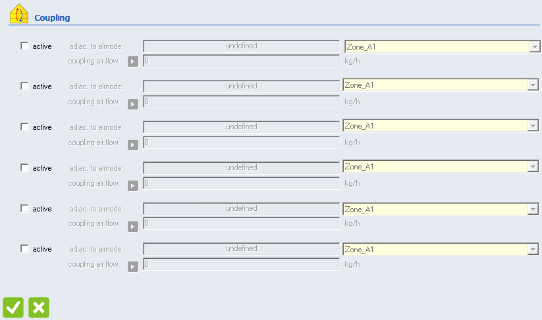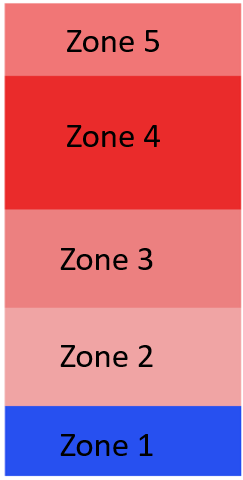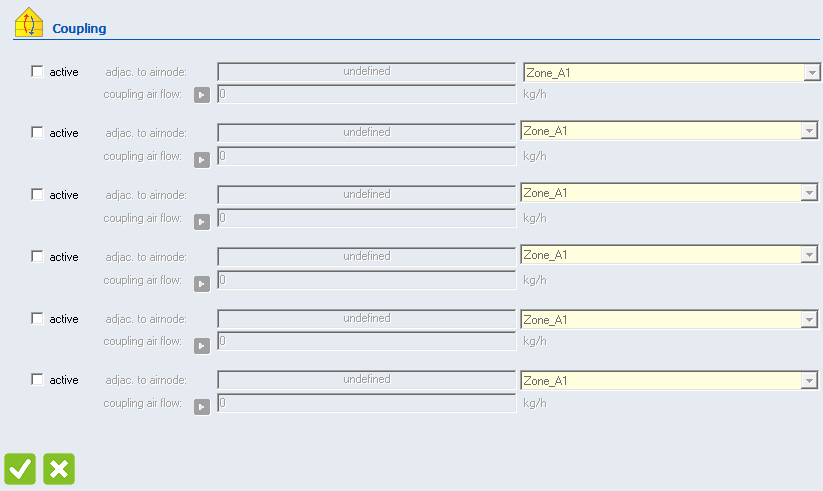Loïc,
Sorry for misinterpreting your question. I think you do need to delete the adjacent surfaces and get one large radiation zone that includes your stack of airnodes. Then you use the "coupling between airnodes" popup to define the rate at which air moves from one of the air nodes to the other.
If you drew your building in SketchUp you can draw in the adjacent surfaces between the airnodes and assign them as the "virtual surface" category option (sorry I can't check the exact language of the option; my SketchUp install is giving me problems right now and I can't launch it to check). In any case if those "adjacent" surfaces are set as virtual then they won't be brought into the TRNBuild model and thus you won't have to delete them manually but will still have the integrity of the airnodes.
kind regards,
David
On 1/13/2023 11:27 AM, Loic Tachon wrote:
Thanks for the answer, in my case I know the ventilation cross flow induced by the stack effect and I suppose that this flow cross all the zone.
Do I need to delete the horizontal air nodes adjacent surface (surface inside the radiation zone) to get just one radiation zone ?
If we know the flow between airnodes, is it better to put it via coupling between zones pop up ?
or through surface definition, adjacent coupling air flow (if the adjacent surfaces are not deleted) ?
Thanks a lot.
Regards,
Le ven. 13 janv. 2023 à 16:56, David BRADLEY <d.bradley@tess-inc.com> a écrit :
Loïc,
The best way to address airflow within a building is to couple your Type56 simulation either with TRNFlow or CONTAM (Type97). The basic idea is that you build a parallel model to your Type56 containing information about the airflow openings between the airnodes (a radiation zone can contain multiple airnodes, especially where there is an atrium like you have described). TRNFlow or CONTAM then take the air node temperatures as well as the wind speed and geometry of the building and determine the amount of air flow that results between the air nodes. Large horizontal openings are challenging because both TRNFlow and CONTAM treat air flow through a horizontal opening as unidirectional. Still, it is by far the most rigorous way of treating the situation.
kind regards,
David
On 1/13/2023 8:29 AM, Loic Tachon via TRNSYS-users wrote:
Dear Trnsys community,
I want to simulate the stack effect in a high room with high thermal gain.
For this, I have 1 zone and 5 thermal air nodes in the z direction to get the temperature at several heights.
How can I do this and avoid that TRNSYS see ceiling between the zone ? Do I need to delete the horizontal surface for zone 2-3-4 ? Or do I put mass less horizontal surface ?
As Well, how do I do the cross flow ventilation ? Do I use the couple mass flow between zones ?
or I put a coupling air flow (same that natural ventilation mass flow) for the horizontal surface ?
Thanks a lot.
Best regards,--
Dr. Loïc Tachon(+33) 6 7440-0536 (France)
_______________________________________________ TRNSYS-users mailing list TRNSYS-users@lists.onebuilding.org http://lists.onebuilding.org/listinfo.cgi/trnsys-users-onebuilding.org-- *************************** David BRADLEY Principal Thermal Energy System Specialists, LLC 3 North Pinckney Street - suite 202 Madison, WI 53703 USA P:+1.608.274.2577 d.bradley@tess-inc.com http://www.tess-inc.com http://www.trnsys.com
--
Dr. Loïc Tachon(+33) 6 7440-0536 (France)
-- *************************** David BRADLEY Principal Thermal Energy System Specialists, LLC 3 North Pinckney Street - suite 202 Madison, WI 53703 USA P:+1.608.274.2577 d.bradley@tess-inc.com http://www.tess-inc.com http://www.trnsys.com




